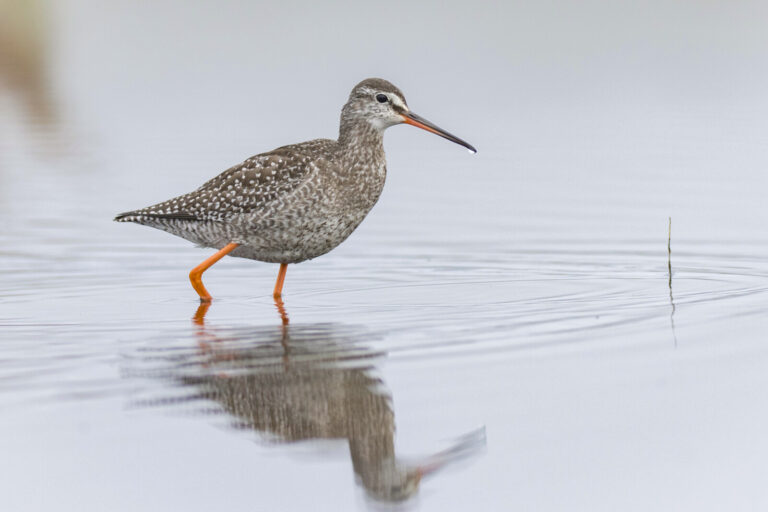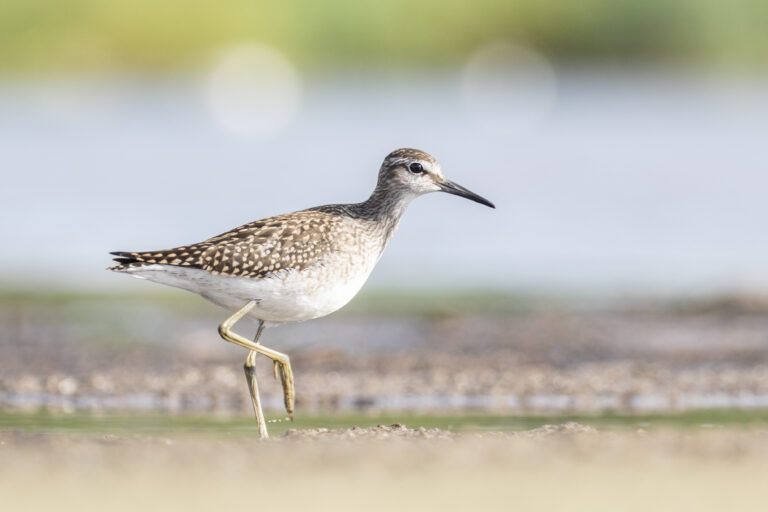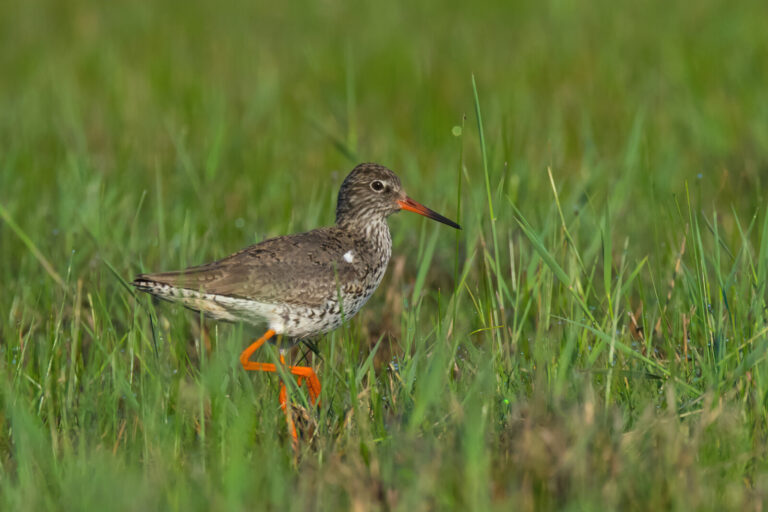Spotted redshank
In contrast to the common redshank, which has a more slender build, longer legs and a longer, finer beak with a very small downward bend at the tip, the base of the beak is only red on the lower part of the beak. A white eyebrow is clearly visible in winter and juvenile plumage. The white stripe continues at the preen gland area as a narrow white ‘crack’. The male bird is completely black in summer, only the top part is slightly dotted and the legs are also black. The female bird has a lot more white dots on the belly and sides. In winter, both adult birds are light grey on the top side and pure white on the underside, the front of the neck and ‘face’ are dirty white. The juvenile bird’s underside is uniformly streaked, and the edges of the large coverts and tertials are finely streaked. The legs are red.



